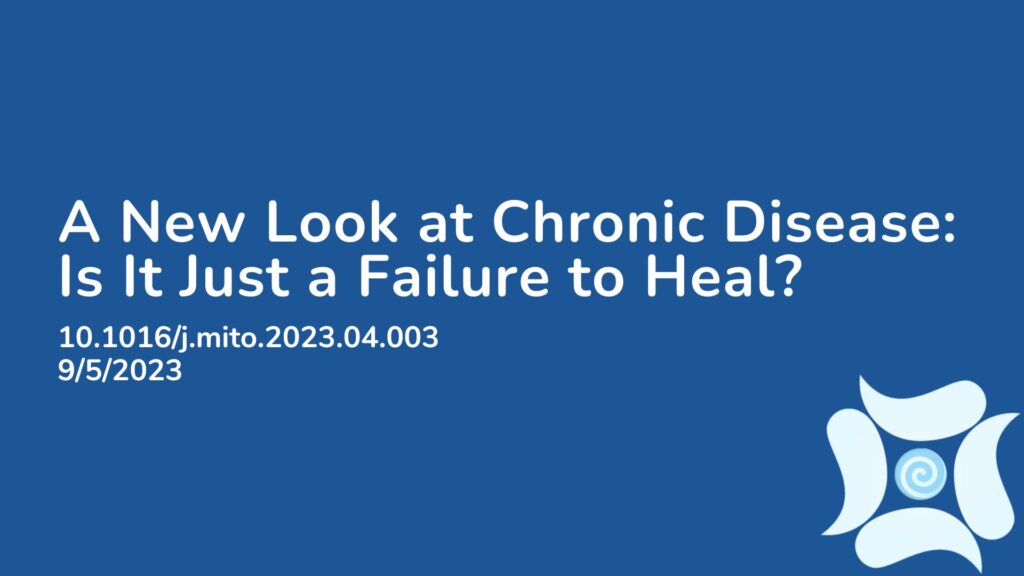Summary:
In this paper published in the journal of Mitochondrian, Dr Robert Naviaux proposes a term named the cell danger response (CDR) for the healing cycle that may be disrupted when chronic disease is present, such as autoimmunity or diabetes. Chronic diseases are currently studied in isolation and do not always look at the whole healing cycle as well as the mitochondrial changes that are impacting the ability to heal. Whilst no two chronic conditions look the same, they often share similarities, such as an underlying failure of the body to fully heal. Naviaux says that often chronic disease will persist because the healing cycle is not complete. The paper explores the concept that disease, health and healing are dynamic cycles which move through beginning, middle and end phases and the phases remain unchanged regardless of the injury. Naviaux explains in depth the role of mitochondria in generating the energy to complete these phases such as responding to injuries like microbial infections, physical injury, or even chemical pollutants. As mitochondria generate energy, the anti-inflammatory function of the injury will be stopped and energy will be shifted towards pro-inflammatory functions needed to heal by replacing the cells lost and restoring communication between cells needed for healthy organ function.
Abstract:
Pathogenesis and salugenesis are the first and second stages of the two-stage problem of disease production and health recovery. Salugenesis is the automatic, evolutionarily conserved, ontogenetic sequence of molecular, cellular, organ system, and behavioral changes that is used by living systems to heal. It is a whole-body process that begins with mitochondria and the cell. The stages of salugenesis define a circle that is energy- and resource-consuming, genetically programmed, and environmentally responsive. Energy and metabolic resources are provided by mitochondrial and metabolic transformations that drive the cell danger response (CDR) and create the three phases of the healing cycle: Phase 1—Inflammation, Phase 2—Proliferation, and Phase 3—Differentiation. Each phase requires a different mitochondrial phenotype. Without different mitochondria there can be no healing. The rise and fall of extracellular ATP (eATP) signaling is a key driver of the mitochondrial and metabolic reprogramming required to progress through the healing cycle. Sphingolipid and cholesterol-enriched membrane lipid rafts act as rheostats for tuning cellular sensitivity to purinergic signaling. Abnormal persistence of any phase of the CDR inhibits the healing cycle, creates dysfunctional cellular mosaics, causes the symptoms of chronic disease, and accelerates the process of aging. New research reframes the rising tide of chronic disease around the world as a systems problem caused by the combined action of pathogenic triggers and anthropogenic factors that interfere with the mitochondrial functions needed for healing. Once chronic pain, disability, or disease is established, salugenesis-based therapies will start where pathogenesis-based therapies end.
Article Publication Date: 9/5/2023
DOI: 10.1016/j.mito.2023.04.003




